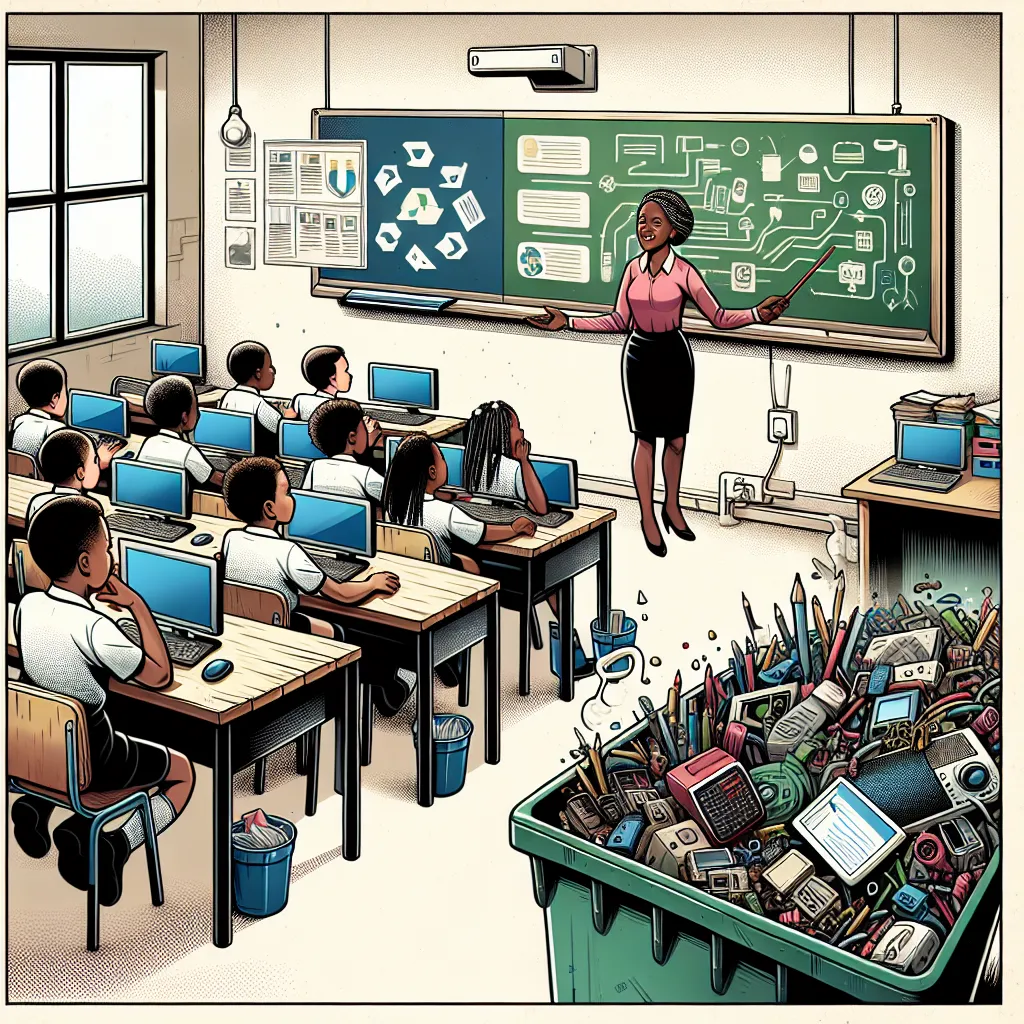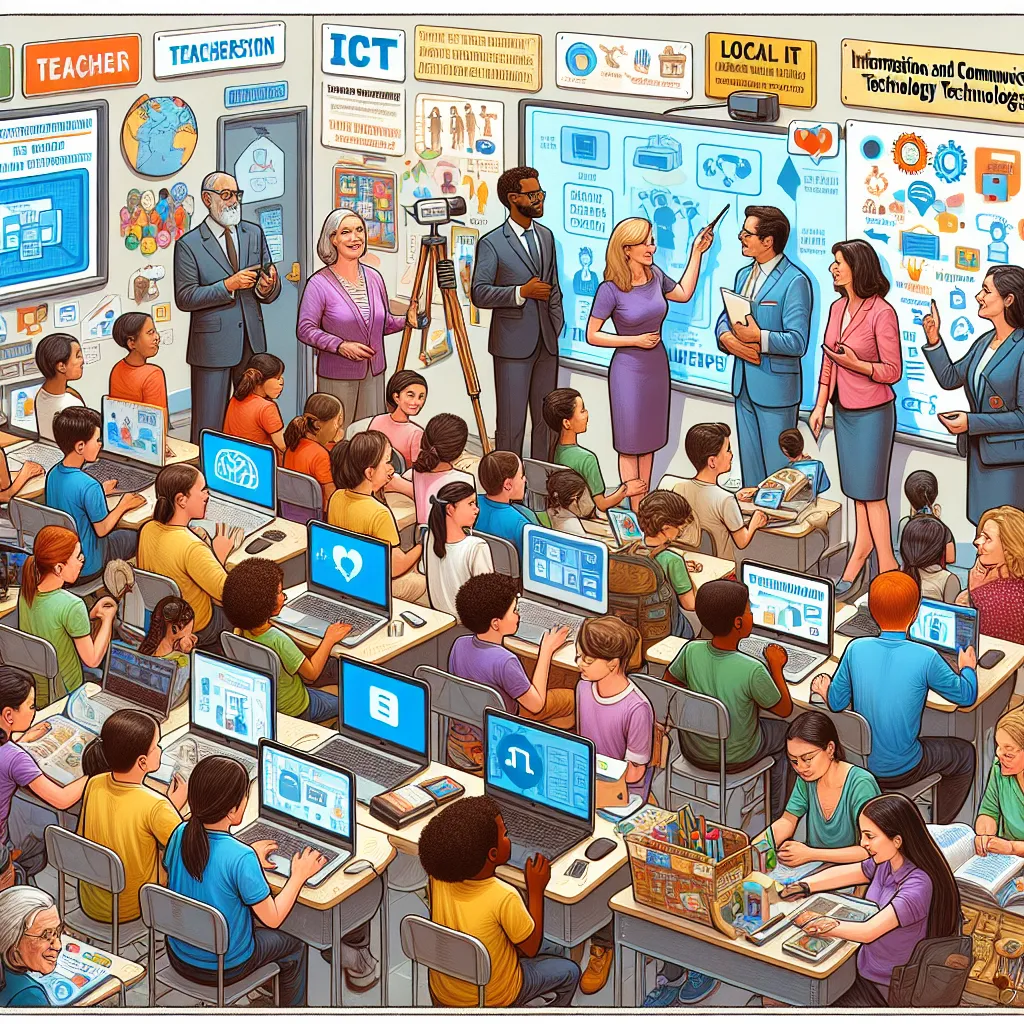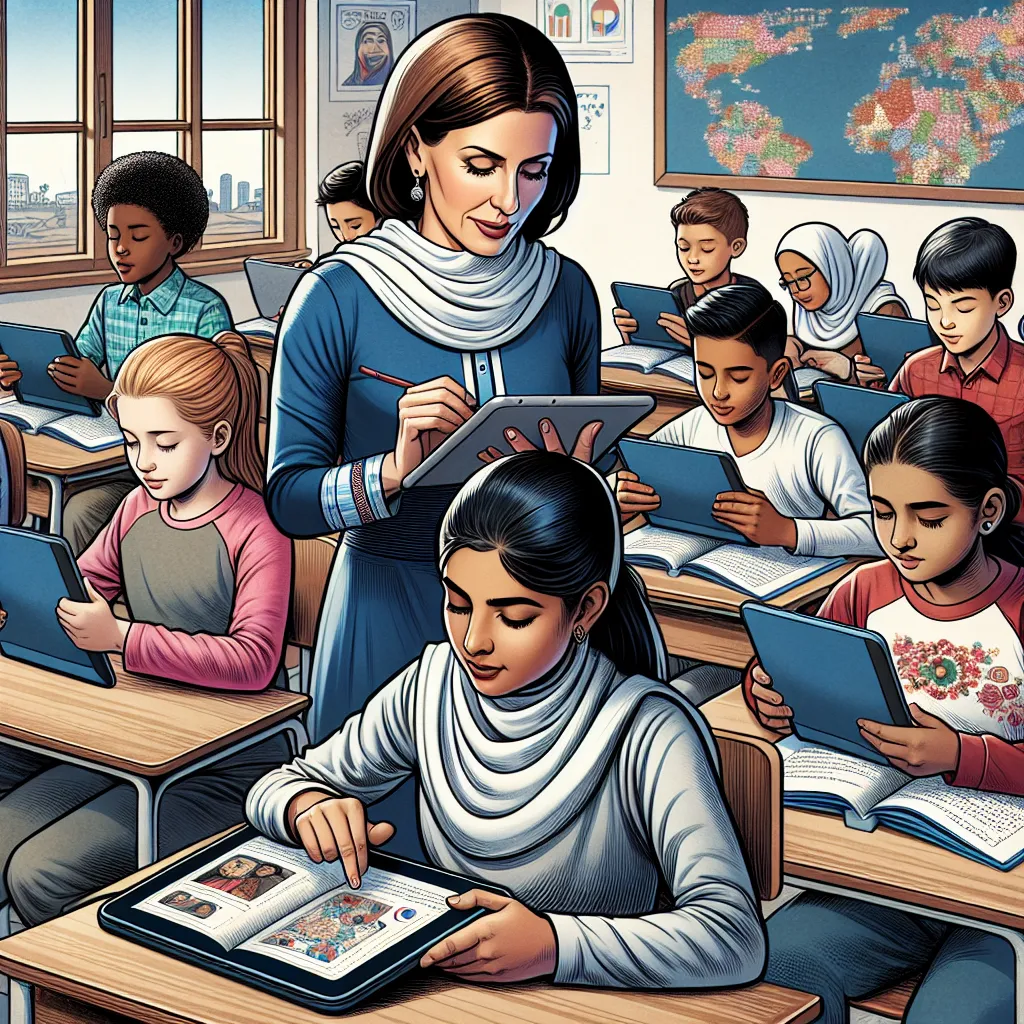Ask AI on The Internet
Question: Please answer the following questions in full and reference the sources at the end: Part 1: Understanding ICT Integration in South African Schools (40 marks) 1. Define ICT (Information and Communication Technologies) and explain why its integration is crucial in the context of South African education. [10] 2. Identify and elaborate on three significant challenges faced by South African schools when integrating ICTs into their educational framework. Provide specific examples if available. [15] 3. Discuss the digital divide issue in South African schools. How does it impact students' access to ICT resources and their learning experiences? Propose possible solutions to bridge this divide. [15] Part 2: Strategies to Support ICT Integration in Classroom Activities (40 marks) 4. Describe the SAMR (Substitution, Augmentation, Modification, Redefinition) model for technology integration. How can South African educators apply this model to enhance classroom activities with ICTs? [10] 5. Explain three innovative ways in which teachers can effectively use ICTs to engage students and facilitate active learning in the classroom. Provide examples for each. [10] 6. Discuss the importance of continuous professional development for educators concerning ICT integration. Outline specific training and support mechanisms that can empower teachers to use ICTs effectively. [10] 7. Explore the role of partnerships with local businesses or organizations in aiding South African schools with ICT resources and support. Provide examples of successful collaborations. [10] Part 3: Reflection and Future Action (20 marks) 8. On your personal experiences or observations regarding ICT integration in education. Share one specific example of successful ICT use in a classroom or educational setting and analyze why it was successful. [10] 9. As a prospective educator or concerned individual, propose three actionable steps that you can take to contribute to the integration of ICTs in South African schools. Explain how these actions could positively impact the educational landscape. [10]
### Part 1: Understanding ICT Integration in South African Schools #### 1. Definition and Importance of ICT Integration in South African Education **Definition of ICT:** Information and Communication Technologies (ICT) encompass a diverse range of technological tools and resources used to communicate, create, disseminate, store, and manage information. This includes computers, the internet, broadcasting technologies (radio and television), and telephony. **Importance of ICT Integration in South African Education:** - **Enhancing Educational Quality:** ICT can improve the quality of education by facilitating learning resources, interactive pedagogical methods, and enabling personalized learning. - **Bridging Educational Gaps:** In a country with vast socio-economic and geographic disparities, ICT helps in providing equitable access to resources, reaching out to remote and rural learners. - **Preparing for the Future:** The integration of ICT prepares students for the digital economy, thereby enhancing their employability and equipping them with necessary 21st-century skills. **References:** - **UNESCO (2015):** ICT in Education, a comparative perspective. - **SA Department of Basic Education (2014):** White Paper on e-Education. #### 2. Challenges in Integrating ICTs in South African Schools **1. Infrastructure and Connectivity:** - **Limited Access:** Many schools, particularly in rural areas, lack basic infrastructure such as stable electricity and internet connectivity. - **Example:** Only 60% of schools in South Africa have basic computer facilities, and internet penetration is significantly lower in rural regions. **2. Training and Professional Development:** - **Lack of Skills:** Teachers often lack the necessary training and confidence to integrate ICT effectively into their teaching practices. - **Example:** The Department of Basic Education has training programs, but coverage and impact are inconsistent. **3. Financial Constraints:** - **Resource Allocation:** Funding for ICT initiatives is often inadequate, resulting in outdated equipment and insufficient technical support. - **Example:** Budget allocations for ICT in education are constrained, prioritizing other pressing needs such as textbooks and basic infrastructure. **References:** - **African Journal of Information Systems (2015):** ICT adoption challenges in South African schools. - **Department of Basic Education (2018):** Annual Performance Report. #### 3. Digital Divide and Solutions **Impact of the Digital Divide:** - **Access Inequality:** Students from marginalized communities have limited access to ICT resources, which impacts their learning experience and academic performance. - **Learning Disparities:** Lack of access to digital resources hinders the ability to perform research, complete assignments, and develop digital literacy skills. **Proposed Solutions:** - **Public-Private Partnerships:** Collaborations with tech companies and NGOs to provide digital devices and connectivity. - **Government Initiatives:** Policies to subsidize internet costs for educational institutions and expand broadband infrastructure. - **Community Involvement:** Establishing community centers equipped with ICT resources to ensure broader access. **References:** - **World Economic Forum (2016):** The impact of the digital divide on education. - **South African Government (2021):** The National Broadband Policy. ### Part 2: Strategies to Support ICT Integration in Classroom Activities #### 4. SAMR Model **Definition of SAMR Model:** - **Substitution:** Technology acts as a direct substitute, with no functional change. - **Augmentation:** Technology acts as a direct substitute, with functional improvements. - **Modification:** Technology allows for significant task redesign. - **Redefinition:** Technology allows for the creation of new tasks previously inconceivable. **Application in South African Context:** - **Substitution:** Using word processors instead of handwritten assignments. - **Augmentation:** Incorporating multimedia elements (videos, audio) into presentations. - **Modification:** Collaborating on projects through cloud-based services like Google Classroom. - **Redefinition:** Creating digital portfolios or interactive websites as part of project-based learning. **References:** - **Puentedura, R. (2013):** SAMR Model for Technology Integration. #### 5. Innovative ICT Use by Teachers **1. Interactive Whiteboards:** - **Example:** Teachers can use interactive whiteboards to display dynamic visuals, conduct real-time quizzes, and involve students in interactive activities. **2. Virtual Reality (VR) Field Trips:** - **Example:** Simulating virtual field trips to historical sites or geographical locations to provide immersive learning experiences. **3. Flipped Classrooms:** - **Example:** Students access lecture materials online at home and engage in hands-on activities and discussions in the classroom. **References:** - **Educational Technology Research and Development (2017):** Innovations in classroom technology use. #### 6. Continuous Professional Development **Importance:** - **Skill Enhancement:** Keeps educators abreast of technological advancements and pedagogical strategies. - **Confidence Building:** Ensures teachers are confident in using ICT tools effectively. **Training Mechanisms:** - **Workshops and Seminars:** Regular training sessions focusing on specific ICT tools and pedagogical methods. - **Peer Learning Sessions:** Encouraging teachers to collaborate and share best practices. - **Online Courses:** Providing access to certified online courses for continuous learning. **References:** - **South African Journal of Education (2018):** Professional development for ICT integration. #### 7. Role of Partnerships **Examples of Successful Collaborations:** - **Vodacom's e-School:** Offers online education content aligned with the national curriculum. - **CoZa Cares Foundation:** Provides digital classrooms and teacher training programs. **Impact:** - **Resource Provision:** Supplies necessary ICT facilities and resources. - **Capacity Building:** Empowers educators and students through training and support. **References:** - **Vodacom (2020):** e-School program. - **CoZa Cares Foundation (2019):** Annual Report. ### Part 3: Reflection and Future Action #### 8. Personal Experience **Example of Successful ICT Use:** - **Scenario:** Using a collaborative platform like Google Classroom for group projects. - **Analysis:** This was successful due to its ease of access, real-time collaboration features, and ability to integrate multimedia, which engaged students actively. **References:** - **Educational Technology & Society (2016):** Case studies on successful ICT integration. #### 9. Actionable Steps **1. Advocacy and Awareness:** - **Impact:** Bringing attention to the importance of ICT in education can mobilize resources and support. **2. Volunteering for Training Programs:** - **Impact:** Providing hands-on training to teachers can help bridge the skills gap. **3. Collaboration with NGOs:** - **Impact:** Working with non-profit organizations to secure ICT resources and implement innovative solutions. **References:** - **Development Southern Africa (2022):** Community involvement in educational development. --- By integrating the references and focusing on the key areas, this comprehensive analysis caters to understanding and enhancing ICT integration in South African schools.
Think your answer is better than the AI's? Post it below.
Other Most Relevant Posts:
 1. ICT Integration in South African Schools
2. Challenges in ICT Integration
3. Bridging the Digital Divide in South African Schools
4. SAMR Model in South African Schools
5. Innovative ICT Use i
1. ICT Integration in South African Schools
2. Challenges in ICT Integration
3. Bridging the Digital Divide in South African Schools
4. SAMR Model in South African Schools
5. Innovative ICT Use i
 1. **ICT in South African Education**
2. **Challenges to ICT Integration**
3. **Digital Divide in Schools**
4. **SAMR Model for Educators**
5. **Innovative ICT in Classrooms**
6. **Professional D
1. **ICT in South African Education**
2. **Challenges to ICT Integration**
3. **Digital Divide in Schools**
4. **SAMR Model for Educators**
5. **Innovative ICT in Classrooms**
6. **Professional D
Question Tags
If you want your question answered by an AI, click here.





Post your own comment: